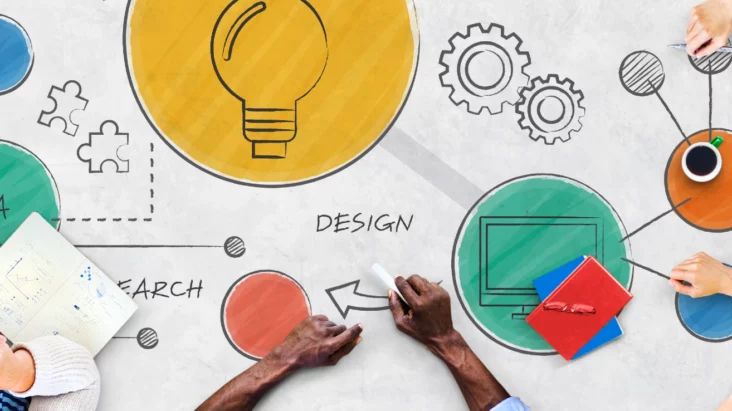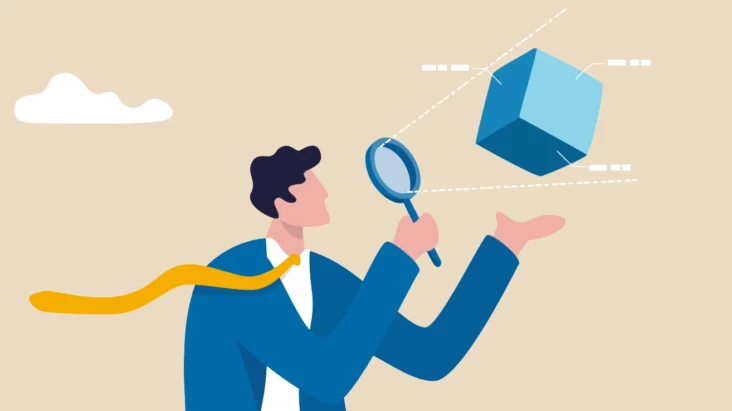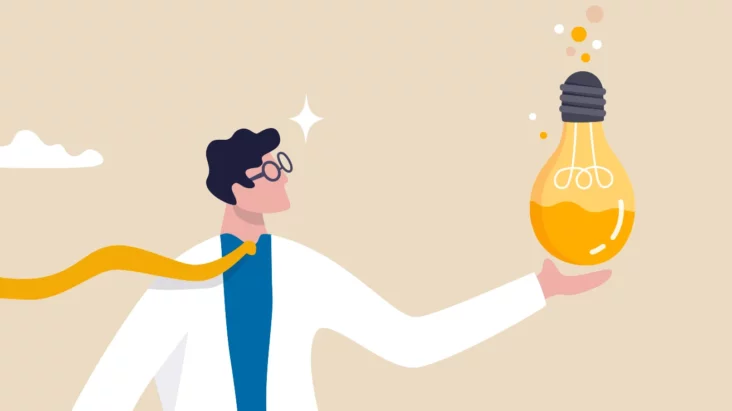In brief:
In the dynamic world of Agile Product Development, every step we take is driven by a commitment to deliver value to the end-users. One such critical step in the journey is the ‘Discovery Phase’, which often acts as the unsung hero of successful projects. Let’s dive into the nuances of this integral phase and explore its transformative impact on product development.
Table of content:
Understanding the Discovery Phase: A Deep Dive
In the realm of Agile Product Development, the journey begins with the Discovery Phase. This phase, typically spanning 4-8 weeks, is the bedrock upon which successful products are built. It’s the initial exploration that uncovers valuable insights and sets the direction for the entire project. Let’s delve deeper into understanding the Discovery Phase.
Defining the Problem and its Value
The first step in the Discovery Phase is defining the problem. This involves understanding the issue at hand, its impact on users, and the context in which it exists. The team explores questions like – What is the problem? Who does it affect? How does it affect them? Why does it matter?
Once the problem is defined, the next task is to quantify its value. Essentially, this means estimating the benefits of solving the problem. If the problem were solved, what positive outcomes would result? Would it save time or money? Would it improve user experience or customer satisfaction? Would it give a competitive edge? Quantifying these benefits gives a clear idea of the value of solving the problem.
Understanding Users and Their Context
A user-centric approach is at the heart of the Discovery Phase. The team seeks to understand the users, their needs, behaviors, and the context in which they’ll use the product. This could involve user interviews, surveys, observation, or other forms of user research.
Understanding the user context also involves identifying any constraints the team might face. These could be technical constraints, legal requirements, budget limitations, or existing processes that must be adhered to.
Identifying Opportunities for Improvement
As the team explores the problem and user context, they also look for opportunities to improve things. They ask – How can we make things better? Where are the gaps in the current solutions? What unique value can we provide?
These opportunities form the basis for the proposed solution and guide the design and development process in subsequent phases.
Deciding the Way Forward
At the end of the Discovery Phase, the team has a well-defined problem, a clear understanding of the user and their context, and a set of identified opportunities. Based on these, they propose a potential solution.
They then decide whether to move forward to the Alpha Phase, where this solution will be developed and tested. This decision is based on the viability of the solution, its projected value, and the feasibility of developing it within the identified constraints.
Understanding the Discovery Phase
The Importance of the Discovery Phase

The Discovery Phase holds a pivotal role in the Agile Product Development process. It’s at this stage that we lay the groundwork for the entire project, and it’s here we ensure that our subsequent efforts are directed effectively and efficiently. Let’s delve deeper into why the Discovery Phase is so crucial before jumping into solution mode.
Avoiding Assumption-Based Solutions
Without a clear understanding of the problem, its context, and the user’s needs, jumping directly into solution mode can lead us down the path of assumption-based solutions. These are solutions built on what we assume to be the problem or what we believe the users need. However, assumptions can often be misguided or incomplete, leading to solutions that miss the mark.
The Discovery Phase helps us avoid this pitfall by providing an accurate understanding of the problem and a thorough insight into user needs. This ensures that our solutions are rooted in reality rather than assumptions.
Efficiency and Resource Optimisation
Rushing into solution mode without a clear understanding of the problem can result in wasted effort and resources. Teams might end up developing features that are not needed, missing critical requirements, or having to redo work due to unforeseen constraints.
On the other hand, the Discovery Phase allows us to identify potential constraints, risks, and opportunities upfront. This leads to better planning and resource allocation, ultimately making the development process more efficient and cost-effective.
Building the Right Thing
One of the biggest risks in product development is building the wrong thing – a product that doesn’t solve the problem effectively or one that users don’t need or want. Without a discovery phase, there’s a high risk of falling into this trap.
The Discovery Phase ensures that we’re building the right thing. It helps us understand the problem deeply, empathize with users, and identify their real needs. This guides us in crafting solutions that truly address the problem and add value for the users.
Informed Decision Making
Finally, the Discovery Phase empowers us to make informed decisions. Whether it’s deciding on the features to include, the technology to use, or even whether to proceed with the project at all, these decisions are backed by the solid foundation of knowledge and insights gained during discovery.
Benefits of the Discovery Phase
The Heart of the Discovery Phase
In the bustling world of product development, it’s easy to get swept away in the tide of technology, features, and innovation. However, at the core of every successful product lies a simple truth – understanding users’ needs and behaviours. This is where the Discovery Phase comes into play, acting as our compass guiding us towards true user-centric design.
Understanding User Needs
During the Discovery Phase, we dive deep into the world of our users. We conduct interviews, surveys, and observation sessions to understand what our users need from our product. This could range from functional requirements (what the product should do) to emotional needs (how the product should make them feel).
For instance, if we’re developing a fitness app, functional needs might include tracking workouts, while emotional needs could be feeling motivated or empowered. By understanding these needs, we can ensure that our product addresses them effectively.
Understanding User Behaviours
But understanding user needs is just one part of the puzzle. Equally important is understanding user behaviours – how they interact with current solutions, their usage patterns, their preferences, and their pain points.
Continuing with our fitness app example, understanding user behaviours could involve observing how users currently track their workouts, when they prefer to exercise, what features they use most in existing apps, and where they face challenges.
This understanding allows us to design a product that aligns with users’ behaviours, making it intuitive and user-friendly.
Empathy: Walking in the User’s Shoes
The Discovery Phase goes beyond mere understanding; it helps us empathise with our users. Empathy maps, user diaries, and direct interactions allow us to see the world from the user’s perspective, to feel their frustrations, and share their aspirations.
This empathy enables us to design products that resonate with our users on an emotional level, creating meaningful and engaging experiences.
Informing the Design Process
The insights gained about user needs and behaviours during the Discovery Phase directly inform the design process. They guide the creation of user personas, user stories, and use cases. They help prioritise features based on user needs and influence the user interface to align with user behaviours.
Identifying Constraints and Opportunities
The Strategic Advantage of the Discovery Phase
The Discovery Phase in Agile Product Development is not only about understanding the problem and user needs. It’s also a strategic stage where we identify potential constraints that might impact our project and uncover opportunities for improvement that can enhance our solution. Let’s delve deeper into this aspect of the Discovery Phase.
Spotting Potential Constraints
Every project has its set of constraints – be it budget limitations, technological restrictions, legal requirements, or existing processes. Ignoring these constraints can lead to significant hurdles down the line, possibly derailing the project or leading to costly revisions.
The Discovery Phase helps us identify these potential constraints early on. For instance, we might discover during our research that the solution we’re considering would require a technology that’s not compatible with our users’ common devices. Knowing this upfront allows us to consider alternate technologies or solutions, thus avoiding a potential roadblock.
Unearthing Opportunities for Improvement
The Discovery Phase is also a fertile ground for spotting opportunities for improvement. As we delve deep into the problem space and user context, we often stumble upon areas where we can enhance the current situation, beyond the immediate problem we’re trying to solve.
For example, while developing a new e-commerce platform, we might discover during the Discovery Phase that users struggle with the checkout process in existing platforms. This insight presents an opportunity for us to streamline the checkout process in our platform, thereby offering an improved user experience.
Moreover, as we explore the landscape, we might also identify opportunities for innovation – new features, technologies, or methodologies that can elevate our solution and give us a competitive edge.
Informing Project Planning and Design
The constraints and opportunities identified during the Discovery Phase play a crucial role in shaping our project plan and design. They help us define the project scope, choose the right technologies, allocate resources effectively, and prioritise features. They also inspire innovative solutions and enhancements that can make our product stand out.
Quantifying Problem Value
The Economic Rationale of the Discovery Phase
In any product development endeavour, one critical question that needs to be addressed is – “Is solving this problem worth it?” The Discovery Phase in the Agile Product Development process plays a crucial role in answering this question. Let’s explore how the Discovery Phase helps quantify the value of solving the problem.
Understanding the Impact of the Problem
The first step towards quantifying the value of solving the problem is understanding the impact of the problem itself. During the Discovery Phase, we delve deep into the problem space, examining how the problem affects users, how widespread it is, and what consequences it has on the business or the broader environment.
For instance, if we’re developing a project management tool, we might discover during this phase that current solutions in the market are causing significant productivity losses due to poor user experience. This gives us a measure of the problem’s impact.
Estimating the Benefits of the Solution
Once we understand the impact of the problem, we can estimate the potential benefits of our solution. If our product can address the issues identified, how much productivity gain can it provide? How much time or cost savings can it offer? What additional benefits, such as improved customer satisfaction or competitive advantage, can it deliver?
By quantifying these benefits, we get a clear idea of the value our solution can provide.
Informing Decision-Making
Ultimately, the value of solving the problem must be weighed against the cost of developing and implementing the solution. The Discovery Phase helps here too. By providing a clear understanding of the problem, user needs, and potential constraints, it allows us to estimate the resources required to develop the solution.
We can then compare this cost against the estimated benefits to determine if the solution is economically viable. If the benefits outweigh the costs, it provides a strong rationale for proceeding with the project.
Weighing Cost Against Value
Quantifying the value of solving the problem is crucial for informed decision-making. It helps stakeholders understand the potential return on investment, informing decisions about project approval, resource allocation, and priority setting.
The Discovery Phase: Paving the Way to the Alpha Phase
The journey from an idea to a fully-fledged product is a step-by-step process in Agile Product Development. One of these significant steps is transitioning from the Discovery Phase to the Alpha Phase. The decision to move forward is not made lightly; it’s informed by the insights and understanding gained during the Discovery Phase. Let’s explore this process further.
Defining the Problem and Solution
The Discovery Phase helps define the problem clearly and propose a viable solution. It provides a comprehensive understanding of user needs, behaviours, and the context in which the problem exists. It also helps identify potential constraints and opportunities for improvement.
With this knowledge, teams can outline a potential solution that addresses the user’s needs, fits within the identified constraints, and leverages opportunities for improvement. This proposed solution forms the basis for the Alpha Phase, where it will be further developed and tested.
Quantifying the Value
As discussed earlier, the Discovery Phase also helps quantify the value of solving the problem. It allows us to estimate the potential benefits of our solution, weigh them against the projected costs, and determine if the project is economically viable.
If the estimated value is substantial and justifies the investment, it provides a strong argument to proceed to the Alpha Phase.
Assessing Feasibility and Risk
The Discovery Phase also involves an assessment of feasibility and risk. Based on the understanding of user needs, technical constraints, legal requirements, and other factors, teams can evaluate if the proposed solution is feasible to develop and implement.
Similarly, potential risks associated with the project are identified and assessed. If the project is deemed feasible and the risks are manageable, it strengthens the case for moving to the Alpha Phase.
Making the Decision
Armed with a defined problem and solution, quantified value, and assessed feasibility and risk, stakeholders can make an informed decision about proceeding to the Alpha Phase. This decision is not based on gut feelings or preliminary ideas; it’s backed by solid research and data, ensuring that the project moves forward on a firm footing.
The Discovery Phase as a Collaborative Process
The Discovery Phase: A Symphony of Collaboration
In the agile world of product development, the Discovery Phase is not a solitary endeavour. It’s a collaborative process that draws on the expertise of a multidisciplinary team and often extends beyond the team to include users, stakeholders, and even the wider public. Let’s explore the collaborative nature of the Discovery Phase and its benefits.
The Multidisciplinary Nature of the Discovery Phase
The Discovery Phase brings together a diverse team of individuals, each with their unique perspectives and skills. This could include product managers, designers, developers, business analysts, and more. Each team member plays a critical role in shaping the understanding of the problem and the proposed solution.
For instance, while product managers might focus on understanding user needs and the business context, designers could delve into the user experience aspect, and developers might explore the technical feasibility. This multidisciplinary approach ensures a well-rounded understanding of the problem and solution, taking into account all relevant factors.
Moreover, the diversity of thought fostered by such a team can lead to innovative ideas and solutions, enhancing the quality of the product.
Public Sharing and Collaboration
Another key aspect of the Discovery Phase is the sharing of findings and insights. This could involve sharing research data, user insights, proposed solutions, and more with stakeholders, users, and often, the wider public.
This openness serves multiple purposes. First, it promotes transparency, ensuring that all involved parties are on the same page and understand the basis for decisions.
Second, it invites feedback, allowing others to contribute their perspectives and ideas. This can lead to richer insights, improved solutions, and increased buy-in from stakeholders and users.
Finally, public sharing can foster collaboration with other organisations or teams working in the same problem space. By pooling resources and knowledge, these collaborations can lead to more robust and effective solutions.
In conclusion:
In conclusion, the Discovery Phase is the cornerstone of successful Agile Product Development. It enlightens us about the problem, empowers us with user insights, and equips us with the knowledge to design valuable, user-centric solutions. By ensuring a thorough and effective Discovery Phase, we set a strong foundation for the subsequent stages of our project, ultimately enhancing its chances of success and impact.
So, the next time you embark on an Agile Product Development journey, remember to discover before you deliver. Your users will thank you, and so will your team.








